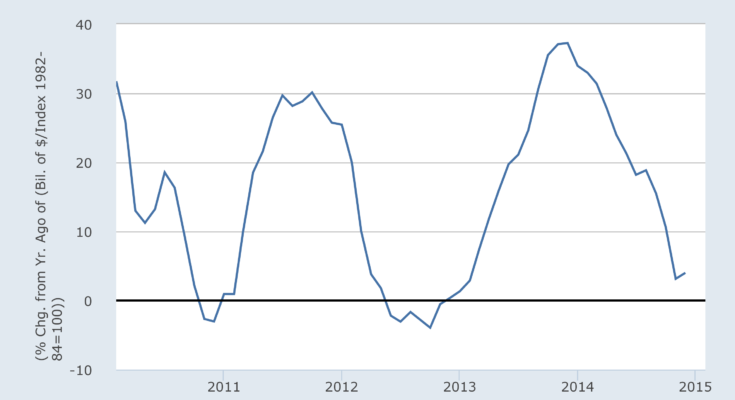Warren Buffett has his doubts, and so do plenty of other analysts. Weak economic activity overseas is arguably a factor that could delay the onset of US tightening. Based on the domestic trend, however, the case for raising rates soon is compelling, according to Cleveland Fed President Loretta Mester, who said earlier this week that “if incoming economic information supports my forecast, I would be comfortable with liftoff in the first half of this year.â€
Judging by the ongoing fade in the year-over-year change in the real monetary base, the Fed seems to be laying the groundwork for a round of tightening in the near-term future. The St. Louis Adjusted Monetary Base (deflated by the consumer price index) advanced just 4.0% in the year through December 2014, a world below the 37% surge that we saw at the end of 2013.

It’s also interesting to note that the market’s inflation expectations have recently ticked up, albeit after months of trending lower. It’s anyone’s guess if the crowd will continue to price in higher inflation in the weeks and months to come, but at the moment we’re seeing something we haven’t seen in a quite a while: a sustained increased in the Treasury market’s outlook for future pricing pressure. The Treasury’s implied estimate, based on the yield spread for the five-year nominal Treasury less its inflation-indexed counterpart, recently jumped to around 1.4%. That’s still quite low—and far below the roughly 2% level that prevailed as recently as last summer. But the recent bounce off of the 1.05% level from last month marks a break with the months-long trend lower.

It’s also notable that that the 2-year Treasury yield–said to be the most sensitive spot on the yield curve for rate expectations—has stabilized recently around the 0.5% level. Despite the recent volatility in this yield lately, an upward bias can be detected here in terms of recent history.

